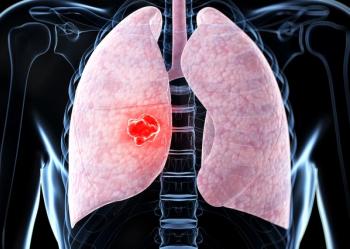
Oncology NEWS International
- Oncology NEWS International Vol 6 No 9
- Volume 6
- Issue 9
New Policy Board Enters Tobacco Fray
WASHINGTON-A funny thing happened to the National Cancer Policy Board (NCPB) on its way to issuing a "white paper" on tobacco control. Between its decision to do so and its public hearing on the issue, the tobacco industry and the attorneys general of 40 states announced their proposed $368.5 billion settlement of the states' lawsuit.
WASHINGTONA funny thing happened to the National Cancer Policy Board (NCPB) on its way to issuing a "white paper" on tobacco control. Between its decision to do so and its public hearing on the issue, the tobacco industry and the attorneys general of 40 states announced their proposed $368.5 billion settlement of the states' lawsuit.
The proposed settlement gave a focus to the hearing that it might otherwise have lackedthe vital need for tobacco-control advocates to persevere should Congress approve the agreement.
NCPB Asks Congress to Consider Five Antismoking Points
WASHINGTONThe National Cancer Policy Board (NCPB), after lengthy discussions (see article above), made its first policy pronouncement in the form of a letter to Donna Shalala, PhD, Secretary of Health and Human Services.
The letter lists five points for the Clinton Administration and the Congress to consider during their reviews of the proposed tobacco settlement.
1. Goals for reducing rates of youth initiation and tobacco use must be explicit, and failure to achieve them must be penalized sufficiently to build strong incentives for compliance by the tobacco industry.
2. The price of tobacco products must be increased substantially and immediately.
3. The federal preemption of state and local regulation of advertising and promotion must be repealed.
4. FDA regulation of tobacco products must be strengthened.
5. The federal government must study, monitor, and evaluate tobacco control measures.
"The daily challenges of preventing tobacco use and helping people quit will be the same, whatever the terms of the deal that might be worked out," said meeting co-chair Richard Bonnie, JD, of the University of Virginia Law School.
Speaker after speaker emphasized that the proposed agreement in no way diminishes the need for intensive tobacco-control efforts. Left unanswered, however, was the question of what effect the settlement, if approved, would have on state, local, and federal programs. Certainly, a number of speakers saw potential negatives.
"Anybody who cares about this issue should be scrutinizing the entire document," said FDA associate commissioner Mitchell Zeller, JD. "Forget the money. Are the states better off or worse off?"
The NCPB, a newly organized advisory group of the National Academy of Science's Institute of Medicine (IOM), decided at its first meetings in March and April to focus its first policy statement on the issue of tobacco control.
The board gave three reasons for focusing on tobacco: (1) Tobacco use represents the single most important cause of cancer in the United States; (2) tobacco-control policy is in flux; and (3) it could build on the IOM's 1994 report, Growing-Up Tobacco Free, and its call for "a national youth-centered tobacco-control strategy."
The 1994 IOM report, for example, recommended a $2 increase in the federal excise tax on cigarettes, as well as tax increases on chewing tobacco and snuff. Congress failed to heed that suggestion or to pass any cigarette tax hike, although some states have moved to significantly raise their tobacco taxes.
Throughout the day-long hearing, speakers reiterated the importance of grass-roots activists and state and local initiatives in tobacco control.
"The state and local level is where the action is and will continue to be," said Thomas Houston, MD, director of preventive medicine for the American Medical Association. He and others urged the NCPB to make recommendations in a number of areas in which federal, state, and local governments could all take effective action.
Taxes: "Raising cigarette taxes is the most effective smoking deterrent developed to date," said economist Kenneth Warner, PhD, of the University of Michigan. Data show that a 10% increase in the cost of cigarettes reduces purchases by adults by 3% to 4%, he said, and "children are likely more price responsive than adults."
He estimated that a 10% price rise would decrease demand for cigarettes among children by 6% to 10% and lower the number of people who begin smoking, a key goal of tobacco control. However, Dr. Warner cautioned, "inflation erodes the effect of a price increase on demand for the product."
Youth access: Smoking levels continue to increase among teenagers, with cigarette smoking rising 4% among high school students between 1984 and 1994, noted Carolyn Celebucki, PhD, of the Massachusetts Department of Public Health.
Although new FDA regulations restricting cigarette sales to those age 18 and older preempt local laws, states and localities can easily obtain a wavier allowing them to enforce more restrictive rules, Mr. Zeller, of the FDA, noted.
The FDA will work with local officials and advocacy groups in making spot compliance checks of retail outlets to test whether they are abiding by the age limit on sales and the requirement that clerks obtain age identification from those under age 27.
"We remain committed to a partnership with our colleagues at the state and local level," Mr. Zeller said. He added that the FDA intends to post information on its web site about retailers who violate the sales ban.
Tobacco industry influence: Speakers frequently cited industry efforts to counter tobacco-control measuresranging from overly aggressive lawsuits and "smokers' rights" campaigns, to personal attacksand the need to fight these obstructive tactics.
Dileep Bal, MD, of the California Department of Health Services, said that Phillip Morris financially backed efforts to enact ballot Proposition 188 in 1994, which would have denied the use of state funds for aggressive antismoking education programs. California voters defeated it, however.
Anyone involved in a tobacco-control program must expect to be attacked by the industry and be ready to respond, said Marc Manley, MD, of the National Cancer Institute. "I wouldn't use the word harassment because I think it is an inadequate term," he added.
Dr. Houston, of the AMA, called the tobacco industry efforts "subversion of the public health process."
Advertising and promotion: Although federal laws and the settlement proposal limit both tobacco advertising and promotion, many areas remain in need of action, such as the tobacco companies' distribution of clothing and other items that carry a cigarette brand's logo and appeal to young people.
"It will be very interesting under the settlement to see what kind of innovative campaigns the industry will come up with," Dr. Houston said.
Counter-advertising
The agreement provides $500 million a year for a nationwide antismoking campaign, and excludes tobacco companies from any part in its design and implementation. Dr. Warner, of the University of Michigan, said his studies suggest that counter-advertising that mocks smokers and smoking can serve as a very effective deterrent to smoking if the campaign is "well funded, well done, and
sustained."
Second-hand smoke: Environmental tobacco smoke remains a health threat that local restrictions can reduce, several speakers noted. Stricter rules governing smoke-free buildings and public places, and more aggressive enforcement, remain areas where local and state governments can make a contribution to controlling the health impact of smoking.
Articles in this issue
over 28 years ago
IL-2 Shows Promise in Treating Hematologic Cancersover 28 years ago
Studies Show Who Seeks Mammography and Whyover 28 years ago
Index Quantifies Bone Disease in Prostate Cancerover 28 years ago
Wynder Urges Nutrition as an Adjunctive Cancer Therapyover 28 years ago
Treating Other STDs May Reduce HIV Levels in the Semenover 28 years ago
Bisphosphonates Improve QOL in Bone Lesion Patientsover 28 years ago
Children Run Greatest Cancer Risk from Nuclear Testsover 28 years ago
Trials of IV SNX-111 Paused, but Phase III Pain Trials Continueover 28 years ago
IL-2 Termed ‘Gold Standard’ in Renal Cell Carcinomaover 28 years ago
ACS Recommends Major Changes in Tobacco SettlementNewsletter
Stay up to date on recent advances in the multidisciplinary approach to cancer.

















































































